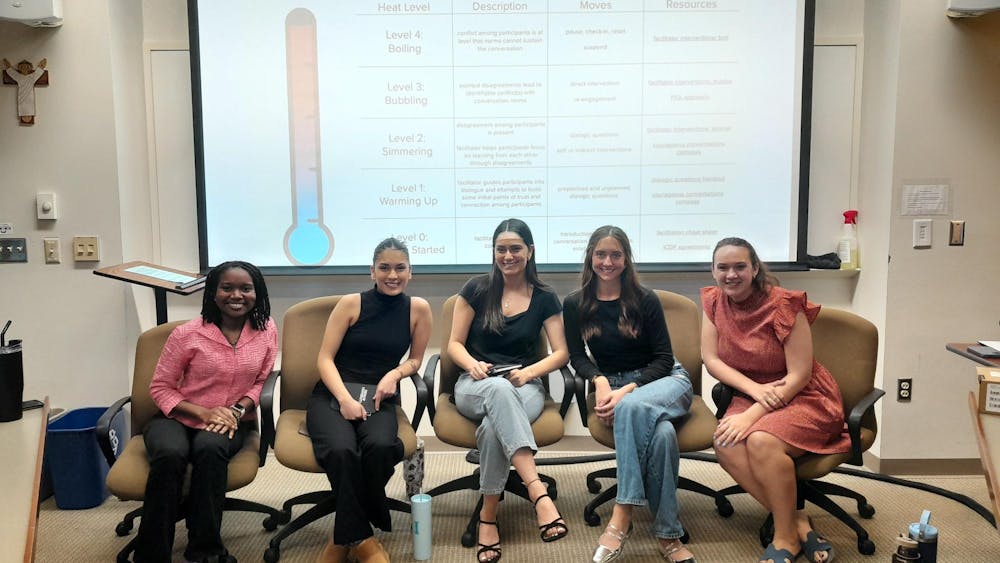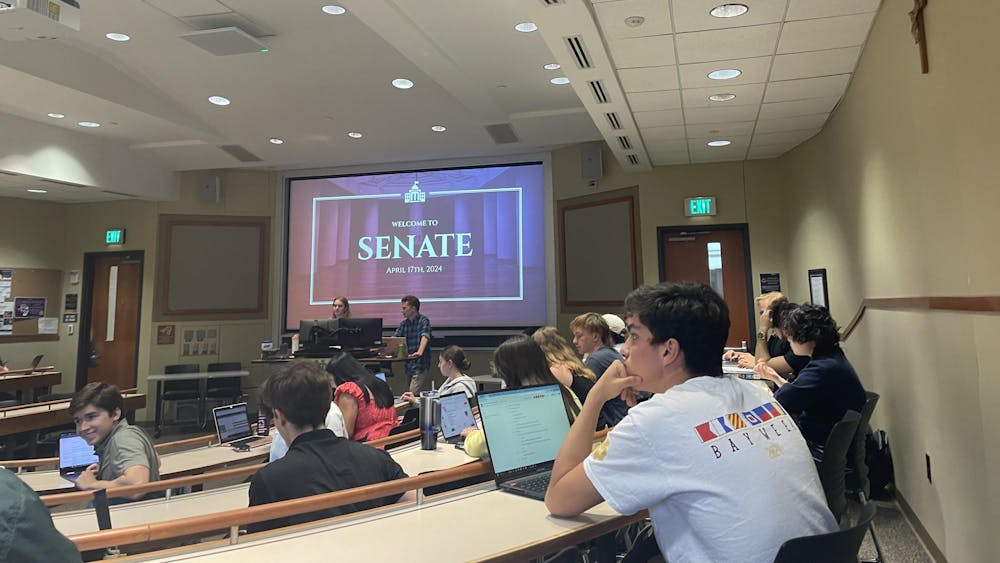CEO of edX and MIT professor Anant Agarwal kicked off the first annual ND Digital Week on Friday with the keynote lecture entitled “Reinventing Education.”
Agarwal said online education not only provides access to superb teaching where educational infrastructure is weak, but it also has the potential to improve the quality of education at existing universities.
EdX, a massive open online course (MOOC) provider, reaches a global audience and offers 300 courses to nearly 3 million learners, Agarwal said.
Featuring courses in a variety of disciplines taught by professors from Harvard, MIT and other renowned institutions, edX also caters to a broad range of students, many of whom do not have access to a formal education. Agarwal said in developing countries, university expenses and hyper-competitive admissions bar the vast majority of people from pursuing higher education.
“One of edX’s main goals is to offer instruction to those who either can’t qualify academically or financially,” he said.
The numbers are encouraging, Agarwal said. For edX’s first course, “On Circuits and Electronics” offered by MIT, over 155,000 students from 152 countries signed up. Agarwal said over 7,000 students passed the same course that electrical engineering majors at MIT take.
“These are very big numbers ... I would have to teach for 40 years to reach these many students,” he said.
Behind the large numbers are the “amazing” individual stories of the learners, Agarwal said citing a student from an African village who took a course on solar energy.
“In the village, the power kept coming and going,“ he said. ”Based on what this student learned in the course, he actually set up a solar system ... because of that, the power is more continuous in the village.”
Agarwal said edX implemented a free and publicly accessible open-source version of its platform, named Open edX, to further increase access.
“Open source is good for all of us because people can contribute to the platform,” he said. “Today...there are 50 Open edX sites and 500 courses running on these sites.”
EdX also aims to integrate decades-worth of educational research into the American university system, Agarwal said.
“In many fields research has been rapidly moving into practice,” he said. “But in education, things don’t look all that different today ... we really have not adapted all these ideas.
“On the edX platform, there are no lectures as such, but learning sequences: an interleaved sequence of videos and activities. This form of learning, where [the student] is not just listening to the lecture, but engaging with the material, is called active learning.”
In addition to implementing educational research, Agarwal said edX uses A/B testing and big data analysis to determine the most effective methods of teaching. EdX groups its users into separate tracks and exposes them to different methods of instruction.
“The A group will continually see A material, and the B group will continually see the B material," he said. "Then you can give them a common assessment and see who does better. This way, we as educators, can continually examine the engineering and improve what we do."
Despite questions as to whether MOOCs like edX seek to replace traditional education, Agarwal said the aim is to blend online learning with classroom interaction. In multiple experiments with San Jose State University, Agarwal said students who supplemented their in-class instruction with corresponding edX videos fared better than students who only took the course.
“In the traditional sections the failure rate for the course was historically 41 percent," he said. "But in the blended version, the failure rate was 9 percent."
Agarwal said there is a synergy between online learning and traditional instruction and hopes more schools will adopt this method of instruction.
“Whether you are a community college or private university, I believe that blended learning can be used by everybody,” he said.













